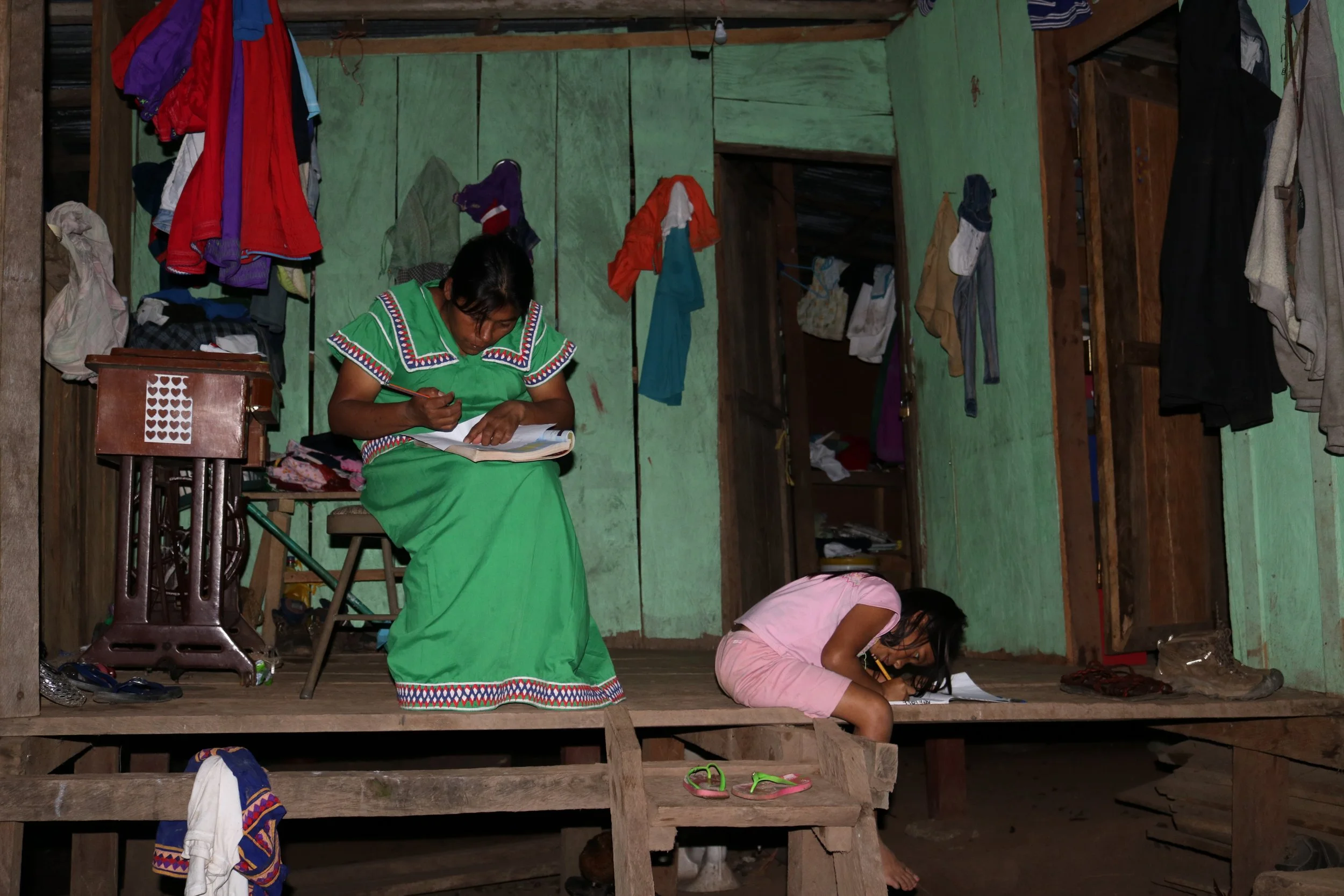In part two of our series on the Barro Blanco dam, Few for Change Secretary Amy Lamb explores recent developments in the ongoing struggle against the project, including a visit from the UN Special Rapporteur on the Rights of Indigenous Peoples, James Anaya.
For the past 14 years, the indigenous Ngäbe-Buglé people of western Panama have fought against the construction of Barro Blanco, a hydroelectric dam being built on the Tabasará River. According to protesters, the project would flood homes and agricultural lands, and destroy the river ecosystem that the Ngäbe-Buglé depend on for fishing. Now, after being a subject of discussion at the mid-June United Nations climate talks in Bonn, Germany, the dam project in rural Panama is receiving international attention for alleged human rights violations.
This discussion revolved around the fact that the Barro Blanco project is registered under the Clean Development Mechanism (CDM) of the Kyoto Protocol. The CDM awards carbon emissions offset credits for projects that are considered ‘sustainable development’, and allows for the trading of these credits between industrialized and developing countries. Unfortunately, as Alyssa Johl of the Center for International Law explains, "Once a project has been registered under the CDM, affected communities have no means to voice their concerns regarding the project's social and environmental impacts.” At the urging of twelve civil society organizations, the UN’s Special Rapporteur on the Rights of Indigenous Peoples, James Anaya, visited Panama to investigate claims of international law violations. (CIEL)
Since plans to construct the dam began in 1999, the project has been met with fierce opposition by the Ngäbe-Buglé. The dam would intercept the Tabasará River, which flows through the semi-autonomous region (known as the Comarca) that the Ngäbe-Buglé inhabit. The Panamanian government has supported the project in its efforts to meet its country’s growing demand for electricity through renewable resources. Though the dam is not located within the Comarca but just downstream, concerned residents argue that damming of the river would cause flooding of homes and agricultural lands, as well as threaten their traditional way of life by disrupting the river ecosystem on which they depend for food, water, and washing.
Since its initiation by the Panamanian firm Genisa in 2006, the project has been marked with controversy. An Environmental Impact Assessment (EIA) conducted in 2007, though approved by Panama’s environmental government agency ANAM, has been criticized for misrepresenting the socio-environmental impacts of the project (Corpswatch). The Assessment claimed that only 6.7 hectares (approx. 16.5 acres) of Comarca lands would be flooded, and no communities displaced. Local residents say they saw few surveyors assessing the landscape, and more importantly, that they were not invited to a public forum as required for EIA approval under Panamanian law. Genisa claims that a February 2008 public meeting was advertised via radio, flyers, posters and newspapers. However, no meeting was held within the Comarca, and the community was not directly contacted about the meeting. (Swyter)
Also under scrutiny are the agreements in which Ngäbe land was relinquished to Genisa for project impacts. In 2008, the Cacique General (Comarca Chief) Maximo Saldaña privately met with company officials and signed over the land, without community consultation. When this deal was called into question, Genisa agreed to renew the agreement. This time, the project passed during a secret meeting with select members of the Comarca’s Regional Congress. Says Julian Caballeros, a Regional Congressman allegedly excluded from these talks, “Indeed, there was a bribe offered to the President of the Congress. On the day they did that maneuver they didn’t allow me to enter the meeting room, because they knew I wasn’t going to allow it.” However, according to international law, only an agreement signed by the Comarca General Congress has the power to pass or deny such a project. Genisa claims they were given approval from this more powerful congress. Unfortunately, Panama has not signed Convention 169 of the International Labor Organization, which mandates the free, prior and informed consent of indigenous people for the use of their natural resources (Swyter). However, according to the Center for International Environmental Law, Genisa’s dealings with the Comarca did not meet minimum international legal standards. The 2011 lawsuit filed by CIEL is still pending. (CIEL)
With concerns raised about the 2008 Environmental Impact Statement, the UN Development Programme (UNDP) carried out a fact-finding mission in 2012 to assess the validity of the EIA. UNDP's assessment report confirmed that the dam will flood homes and religious, historical and cultural sites in the Ngäbe-Buglé territory. The report further documented the project's impacts, including that the dam will convert the flowing Tabasará River into a stagnant lake ecosystem, affecting the Ngäbe's diet and means of subsistence. (CIEL)
Now, with construction of the dam underway, local fishermen say they have seen the riverbed become filled with sediments, which has affected the types of fish being caught. Genisa officials claim otherwise, stating that water is regularly tested by an independent laboratory and that construction waste is prohibited from being dumped in the Tabasará. However, an anonymous worker stated that, “In my opinion it is contaminated, because there is a lot of waste that goes directly into the river.” (Swyter)
"Despite proof that the dam will have grave impacts on the Ngäbe way of life and cultural heritage, the construction of the dam continues," said Weni Bagama, an indigenous leader of the dam opposition group M10. (CIEL) An independent study of the project began in June 2013, and even now, the project carries on. The result of this study would be monetary compensation for the dam’s effects, which doesn’t interest most community members who seek abandonment of the project. (Kennedy) According to Genisa, the project is already 56% complete. (Swyter)
Barro Blanco finally achieved international attention at the June 2013 climate talks in Bonn Germany, prompting UN Special Rapporteur on the Rights of Indigenous Peoples, James Anaya, to complete a formal investigation and visit to Panama this July. Anaya met with various government and indigenous officials, as well as independent organizations. In Anaya’s report, he asserts that there should have been adequate consultation with and involvement of the affected Ngäbe-Buglé communities prior to approval of the hydroelectric project, and that Genisa should not have moved forward with plans to inundate indigenous lands. Over the next few weeks, Anaya plans to review and elaborate on his findings and release a more detailed report, which will be presented to the UN Human Rights Council and be publically available. (UNSR)
In the words of Ms. Bagama, "We urge Mr. Anaya to investigate the situation and do all he can to protect the rights of the indigenous peoples affected by this project." (CIEL) It is unclear what effect the Rapporteur’s statements will have on the construction of the dam. Hopefully, it is not another case of “too little too late” in the fight for indigenous rights.
Sources
“Declaración del Relator Especial sobre los derechos de los pueblos indígenas al concluir su visita oficial a Panamá.” The University of Arizona Support Project for the United Nations Special Rapporteur on Indigenous Peoples. 26 July 2013. http://unsr.jamesanaya.org/statements/declaracion-del-relator-especial-sobre-los-derechos-de-los-pueblos-indigenas-al-concluir-su-visita-oficial-a-panama
Kennedy, Jennifer. “Tabasará River Communities Struggle to Halt Panamanian Dam Project.” CorpWatch: Holding Corporations Accountable. Radical Designs, 10 August 2013. http://www.corpwatch.org/article.php?id=15861
Swyter, Nick. “Panama: The Villages That Can't Be Bought.” Pulitzer Center on Crisis Reporting. Disqus, 6 August 2013. http://pulitzercenter.org/reporting/central-america-panama-ng%C3%A4be-bugl%C3%A9-indigenous-tribe-hydroelectric-dam-tabasar%C3%A1-river-company-genisa-barro-blanco-villages-residents-education-mama-tata-environment
Swyter, Nick. “Panama: Dam Promises or Dam Lies?” Pulitzer Center on Crisis Reporting. Disqus, 15 Aug 2013. http://pulitzercenter.org/reporting/central-america-panama-ng%C3%A4be-bugl%C3%A9-indigenous-tribe-hydroelectric-dam-tabasar%C3%A1-river-company-genisa-barro-blanco
“UN Representative on Indigenous Peoples Asked to Investigate Human Rights Violations Caused by Panama's Barro Blanco Dam.” The Center for International Environmental Law. 18 June 2013. http://www.ciel.org/Law_Communities/BarroBlanco_18Jun2013.html


















